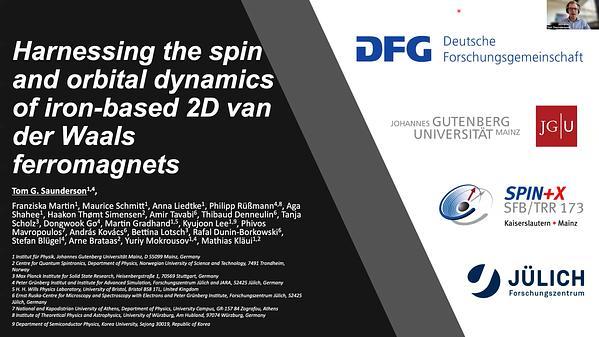Would you like to see your presentation here, made available to a global audience of researchers?
Add your own presentation or have us affordably record your next conference.
Magnetic nanoparticles (NPs) provide an ideal support for developing a wide range of nanotechnologies and biomedical applications, such as drug-delivery, gene delivery,
hyperthermia, or contrast agents for MRI.1 Magnetite (Fe3O4
) NPs are good candidates for these applications due to their non-toxicity and long-life in the bloodstream. To optimize these
applications, it is crucial to well control the magnetic response of individual NP when manipulating a collection of them via a magnetic field. In particular, it is useful to identify any
interparticle magnetic correlations that may cause the magnetic response to deviate from superparamagnetism, induce superferromagnetism and magnetic hysteresis, and affect the
dynamics of fluctuations. To that end, we have studied the magnetic response of 5 – 100 nm Fe3O4 NPs and its dependence on NP size, using magnetometry 2 and spin muon resonance
3. However, this information remains macroscopic or spatially averaged. Here we show how nanoscale spatial information on inter-particle magnetic correlations can be obtained via xray resonant magnetic scattering (XRMS) 4 as illustrated in Figure 1. By tuning the energy of the x-rays to resonant edges of Fe and comparing opposite polarization helicities, we have
extracted information about the local inter-particle magnetic orders within NP assemblies of various sizes.5 We fitted the XRMS data using a model based on chains of NPs.6 The data
fitting shows ferromagnetic ordering when an external magnetic field is applied, and the emergence of antiferromagnetic ordering, competing with magnetic randomness, when the field is
brought back near the coercive point (zero net magnetization). We studied how these correlations depend on particle size and found an enhancement of magnetic couplings and
antiferromagnetic orders for bigger particles. 7 Additionally we will show preliminary studies of the dynamics of magnetic fluctuations via x-ray photon correlation spectroscopy (XPCS).
References
1. Frey et al., Chem. Soc. Rev. 2009, 38, 2532-2542 (2009)
2. Klomp et al., IEEE Trans. Mag. 56, 2300109 (2020)
3. Frandsen et al., Phys. Rev. Matter 5, 054411 (2021)
4. Kortright et al., Phys. Rev. B 71, 012402 (2005)
5. Chesnel et al., Magnetochemistry 4, 42-58 (2018)
6. Rackham et al., AIP Advances 9, 035033 (2019)
7. Rackham et al., to be submitted (2022)

Figure 1: Layout of the x-ray resonant magnetic scattering (XRMS) measurement of a nanoparticle assembly.
